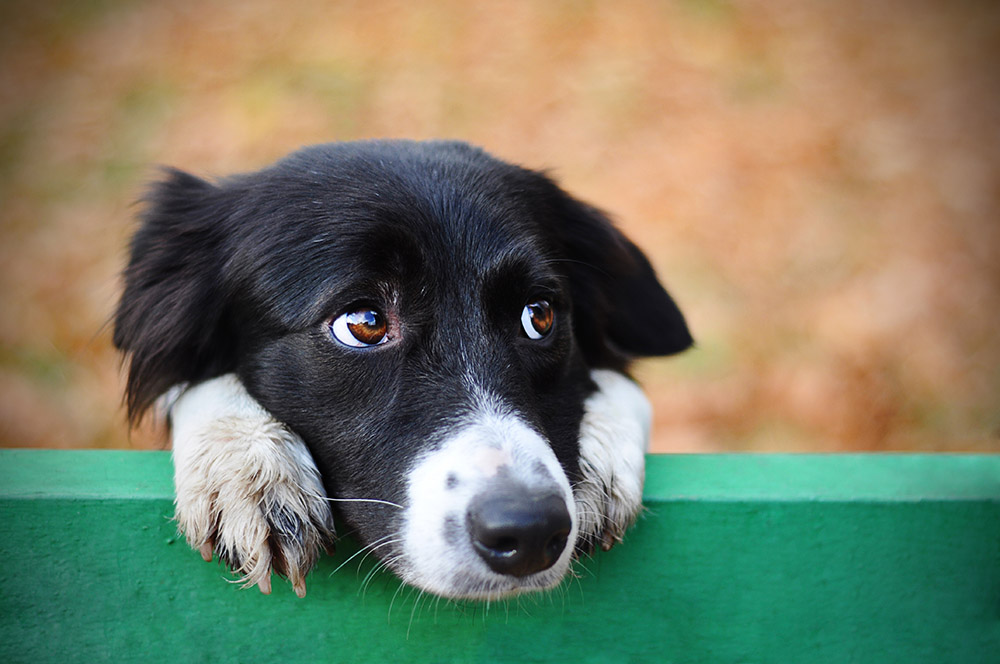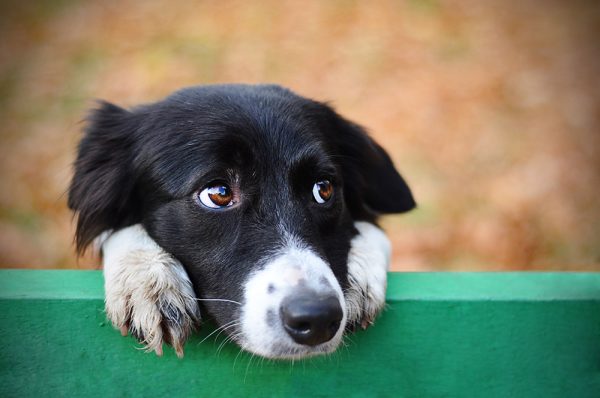Click to Skip Ahead
Any dog parent will tell you their pup is the cutest animal alive. However, the cuteness factor of a dog increases exponentially when they break out the puppy dog eyes. Even if you aren’t a dog parent, you know that look, and it’s a look most people can’t resist!
But what does it really mean when a dog brings out the puppy dog eyes? Is it a manipulative tactic designed to get them treats or something else? And what do puppy dog eyes do to us (other than turn us to mush)? It seems puppy dog eyes are part of our dog’s repertoire to communicate with us, and there is a scientific reason they make us all mushy.
Here’s a closer look at why canines make puppy dog eyes and how they affect us.
The Science of Puppy Dog Eyes
We all know the look—head tilted to the side, raised eyebrows, and big, wide eyes gazing up at us. But why do dogs give us that look? While it’s long been believed that pups give us this look to look cuter when they want something, it seems that puppy dog eyes may simply be a way they try to communicate effectively with humans.
Dogs and humans have long been pals, and we’ve evolved together. Canines evolved from wolves, but while our pups uniformly have the ability to make puppy dog eyes (due to a specific facial muscle ), wolves do not. This muscle is responsible for raising the inner eyebrow intensely and it has been shown that dogs move their eyebrows significantly more often and with higher intensity than their distant wolf ancestors. Thus, it’s theorized that our canine pals developed characteristics over time that allowed them to make facial expressions to better communicate with us, and that puppy dog eyes are a result of selection based on human preferences.
And though it seems the puppy dog eyes come out mostly when our dogs are begging for food or affection, it appears that our four-legged friends actually just make facial expressions when they want to engage with us. A study done in 2017 that looked at 24 canines from different breeds found that when a person was facing them,1 the dog made twice as many expressions as they did when the person was turned away. And it didn’t matter whether the person was holding food or not! This outcome seems to indicate that dogs make facial expressions, such as puppy dog eyes, to communicate and engage with us, rather than it being an effort to look extra adorable so we’ll reward them with food.

Why Do Puppy Dog Eyes Affect Us?
Did you know that when you and your pup gaze into each other’s eyes, oxytocin (or the “love hormone”) is released in your brain? According to the research, oxytocin is also being released in your pup’s brain while this is going on. So, it makes sense that puppy dog eyes make us go, “Aww!” and turn all mushy. Interestingly, dogs may be the only animals where we receive this release of oxytocin during eye contact (though more research is needed to verify this). And that oxytocin release makes us feel great and want to give our dogs whatever their hearts desire!
However, it’s important to realize that there is a lot more to a dog’s body language than just their facial expressions. If you’re trying to read your pup’s facial expressions only and not taking into account any other part of their body, you might misinterpret what they’re feeling. The same goes for context; a dog with a wagging tail doesn’t always mean, “Hi, I’m friendly! Come pet me.” It depends on the context of the situation and what the rest of their body language is saying.
You should also resist projecting human emotions onto your canine pal. Dogs have feelings, but how they feel about things and when they feel them differ from humans, so you can easily misread what your pup is trying to tell you if you do this.

Final Thoughts
Despite popular theory, puppy dog eyes probably aren’t primarily used to lure treats or affection out of us. The most likely reason dogs bring out this look is because they’re making an effort to better engage and communicate with us via facial expression. Canines are also more liable to break out puppy dog eyes when we are facing them, which further lends credence to the theory that this expression is just a way to communicate. Despite knowing that, though, we’ll all probably still take one look at the puppy dog eyes, squeal at our dog’s adorableness, and give them anything they want!
Featured Image Credit: SakSa, Shutterstock










